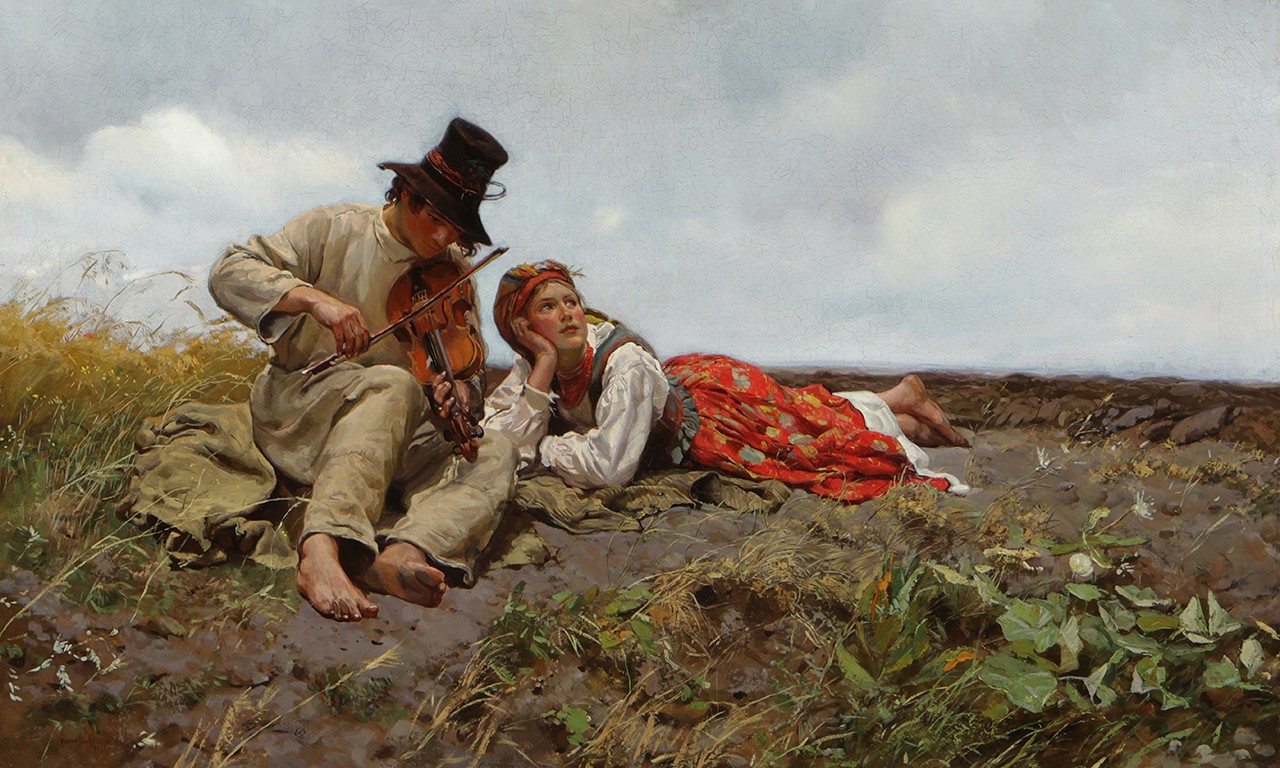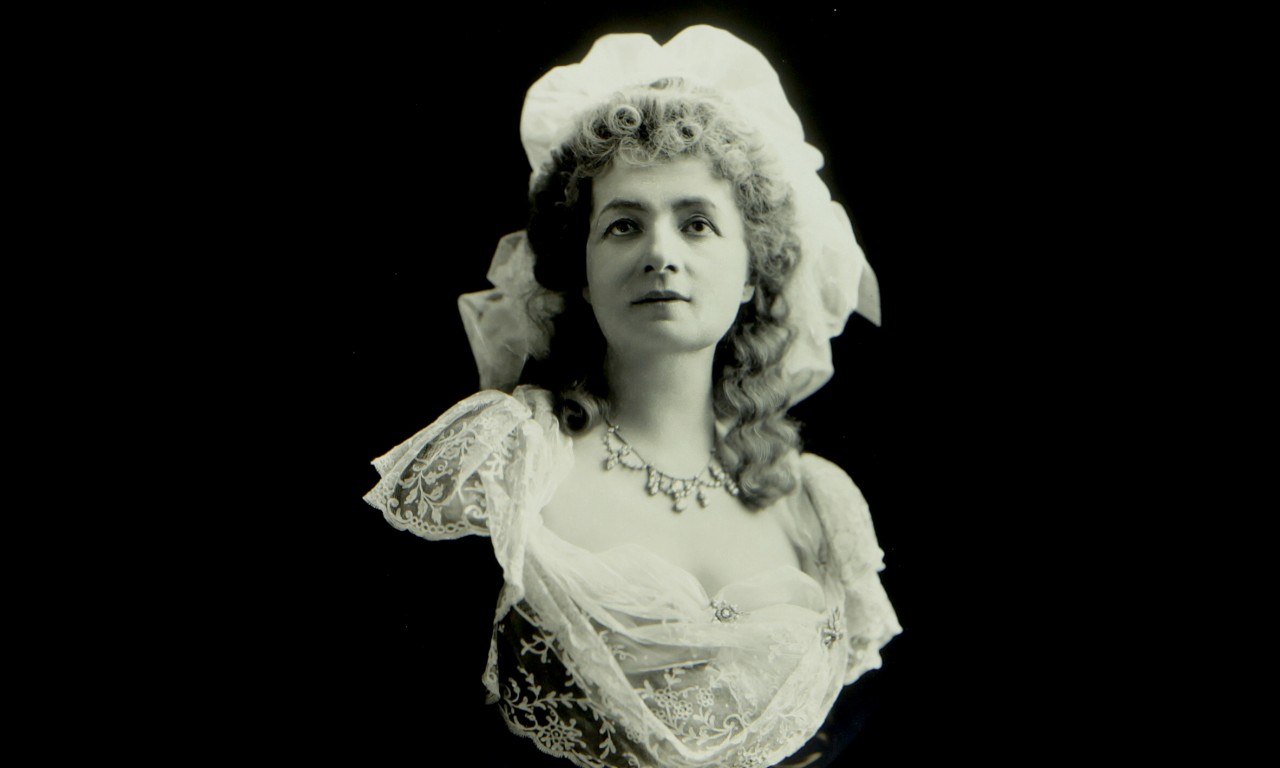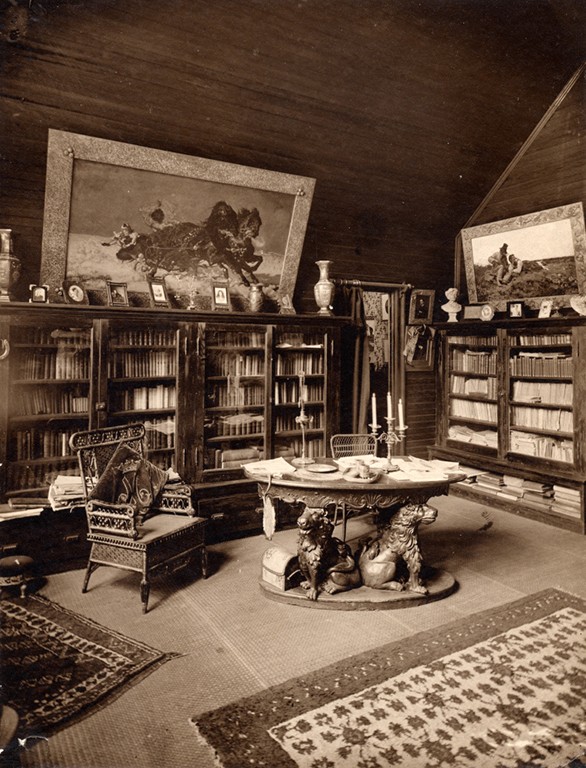Chasing an Idyll: Helena Modjeska and Jozef Chelmonski
 |
| Formerly Sielanka (An Idyll), 1885 Jozef Chelmonski (Polish, 1849-1914) Oil on canvas; 46 x 28 in. 7601 Gift of the Estate of Amadeus Gustavus Langenberger |
Stormy Weather Ahead
This pastoral scene of two Polish peasants in a moment of repose is among the most iconic works in the Bowers Museum’s Fine Art Collection. Up to this point it has been known only as Sielanka—or in English, Idyll. While idealizing the pleasures of a simple life, the painting itself has come to have a somewhat complicated story as the result of several pieces of misinformation that have been attributed to it. In this post we look at the life of the painter and how new research has changed this painting’s significance.
 |
| Indian Summer by Chelmonski, 1875 |
Chelmonski v. Chelminksi
The first associated piece of misinformation is that of the artist’s identity. Despite having a bold, dark brown on marginally less dark brown signature in the painting’s lower left corner, and “J. Chelmonski” written in the donation information, the painting was mistakenly attributed to Jan Chelminski in several mid-century publications. Despite seeming as simple as a typo, the two Polish artists had a great deal in common. They were born within two years of one another with Chelmonski, the older, born in 1849. Both trained with Jozef Brandt in Munich and moved to Paris shortly thereafter seeking renown in the salons of the world’s capital. The primary differences between the two artists lay in their subject matter and mastery of their work. Chelmonksi favored scenes of the Polish countryside—Sielanka is a perfect example of this—whereas Chelminski was history buff who took great pleasure in depicting great battles such as those of the Napoleonic Wars.
 |
| Jozef Chelmonski, late 19th Century |
There and Back Again
Chelmonski began his career studying under Wojciech Gerson in Warsaw between 1867-1871 and then moving to Munich in 1871 where he continued to train in the Polish style of painting. During these same years he vacationed in the Ukraine and Polish countryside. What he found there became his muse for the rest of his life: peasants enjoying midday frivolities, county fairs, dramatic hunts, horses pulling troikas, and snowy country roads in winter. The artist’s soul became inexorably tied to that of rural Poland, and it was from this well that almost all his works were drawn. The trouble was that these paintings were not particularly well received in Poland. Seeking acclaim Chelmonski travelled to Paris and was almost immediately met with success. As a master of the realist school, and a man who cultivated a quaint and picturesque personality to match his artwork, he and his works were incredibly well received, even winning the grand prize at the 1889 Exposition Universelle. But as his Parisian renown grew, the muse that had inspired him slipped further and further away. At one point be brought pigs and horses from Poland directly to his studio hoping to return a sense of authenticity to his works. Spent and homesick, he moved back to Poland in 1887 and a couple years later purchased a farm in the countryside. He continued to paint there until shortly before he died in 1914.
 |
| Madame Modjeska as Marie Antoinette, c. 1891 Unknown Photographer Photographic print; 26 3/8 x 22 in. 86.6.1 Gift of Mrs. A. L. Ford |
Mod Squad
Before he was a successful artist in Paris being wrung out by his distance from home, Chelmonski was a close friend of one of Poland’s most famous stage actresses: Madame Helena Modjeska. She was already a prominent socialite in the early 1870s and threw lavish salons in her Warsaw home every Tuesday. The thespian knew several important Polish painters, but none of them were dearer to her than Chelmonksi. In her memoirs she mentions that on at least a few occasions Chelmonski arrived early to chat before the salon began and announced his arrival by playing a reed flute called a fujarka. When the doorman greeted him, he rushed in still wearing his hooded cloak and playing his merry solo performance to conclusion, casually asking after the song’s end how they had liked the tune. Modjeska was quite taken by his physical appearance and his keen observations.
 |
| "Forest of Arden”, Home Built in Modjeska Canyon by Madame Modjeska, c. 1902 Photographer unknown Photograph; 8 ¾ x 6 ¾ in. 7635 Gift of the Estate of Amadeus Gustavus Langenberger |
Quid Pro Quo
In the provenance of the painting lies another piece of misinformation. The donor wrote on the deed of gift that the painting was originally given to Modjeska by the artist on her wedding day. However, Modjeska married for the last time on September 12, 1868; this painting is clearly dated as having been made in 1885. Though their relationship is not much documented, Modjeska claimed that she had helped the young Chelmonski get a fine art education. Presumably, this would have been something she did before the painter moved to Munich in 1871, but whatever the specifics may be, a secondhand account indicates that this was the reason that he presented the painting to Modjeska after it won a competition. Modjeska brought the painting back to Arden, her home in California, where it hung as her most prized painting until she passed in 1912.
For the Road
The final revelation is that Sielanka is only part of the painting’s title. A drawing that Chelmonski based on the painting is in the permanent collections of the National Museum in Warsaw and indicates that the full title is “Sielanka. Po burzy,” or Idyll: After the Storm. Despite continuing to exhibit after returning to Poland in 1887, Chelmonski largely fell into anonymity right after his death because of the move. For him, the storm had passed though. Being in his place of power energized his final years, and biographies note that surrounded by the subjects of his paintings, he was happier than ever. Idyll: After the Storm was the vision of Poland that both he and Modjeska never abandoned, even halfway across the world.
Text and images may be under copyright. Please contact Collection Department for permission to use. Information subject to change upon further research.
Comments